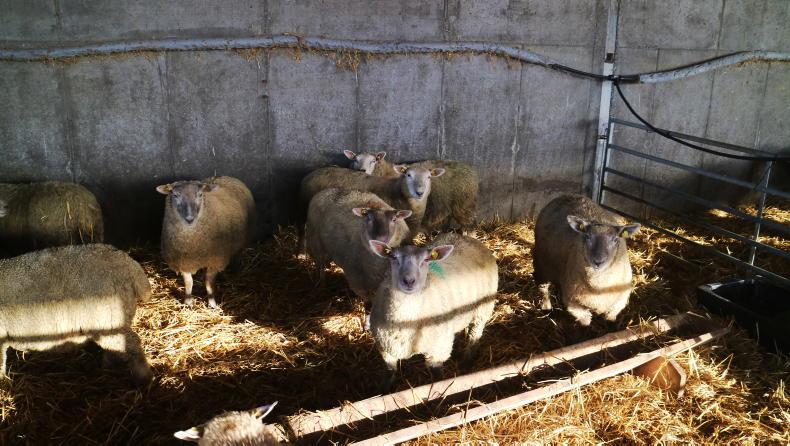Housing lambs
With performance on grazed grass now at a low, some farmers are strategically housing lambs to aid finishing. Lambs should be housed where possible on a dry day. Allocate 0.5m² of floor space for lighter lambs and 0.8m² for larger lambs.
The transition from an outdoor to indoor environment will be aided by having lambs eating concentrates at grass. This generally presents the greatest challenge for Scottish Blackface lambs, with individual lambs often refusing to eat concentrates indoors.
Lambs should be monitored at feeding times, and any lambs not eating or shy eaters should be removed to a smaller pen where there is better access to feed or possibly returned back outdoors for a period.
It is also preferential to get on top of any lameness issues in advance of housing as, depending on floor type, lameness issues can quickly spread in housed sheep.
Where concentrate feeding levels are being increased from a low base, then this should take place incrementally – 200g more every two to three days.
Trough management is important, with levels of feed offered balanced to demand to prevent feed spoiling. As concentrate intake rises, consumption of forage will reduce, but a source of forage should still remain in the diet for roughage.
Where feeding high levels, ammonium chloride should be included in the concentrate at 0.5% inclusion rate to prevent urinary calculi in male lambs. Fresh water is critical, with lambs consuming 4l to 8l daily depending on diet.
Once lambs are accustomed to concentrates, quantities consumed can mount quickly. Lowland and lowland cross lambs can consume 1.2kg to 1.4kg meal daily if offered ad-lib.
Scottish Blackface lambs will average closer to 1.1kg to 1.2kg concentrate consumption. Significant savings can be made where purchasing concentrates in bulk, while the aim should be a high-energy feed avoiding low feed-value ingredients.
A protein content of 13% to 14% is advised for lighter lambs less than 35kg liveweight, falling to 12% for heavier lambs close to finishing.
Temporary fencing
A higher number of temporary grazing agreements and splitting of paddocks to graze heavier covers is seeing temporary electric fencing being utilised more frequently.
The secret to successfully using it is to get sheep accustomed at the outset, preventing any bad habits and in particular preventing sheep from breaching the fence.
The best approach is to set up a robust fence in a smaller area, where you can be sure there is a satisfactory voltage running through the wire. Keeping posts closer together and erecting four strands of fencing at the outset will deliver dividends.
Once sheep are accustomed, three strands of wire will generally suffice where splitting paddocks, with two strands often sufficient on a boundary where there is a hedge, ditch etc behind it.
Fertility issues
Last week’s notes touched on the importance of guarding against ram infertility. In terms of identifying issues quickly, the typical repeat rate in a batch of ewes should not be above 15%. Alarm bells should quickly ring if this is the case.
Raddling rams will deliver obvious advantages in monitoring performance, while changing the raddle colour weekly where feasible will allow precise feeding programmes to be implemented in late pregnancy.
Fertility issues are reduced but not eliminated where running rams in groups, with a dominant ram experiencing fertility issues capable of preventing another ram from working.






 This is a subscriber-only article
This is a subscriber-only article











SHARING OPTIONS: